Simple Perfects with Crosses
Some the earliest known perfect squares featured crosses in their
construction. For example, Sprague's square of order 55, side 4205.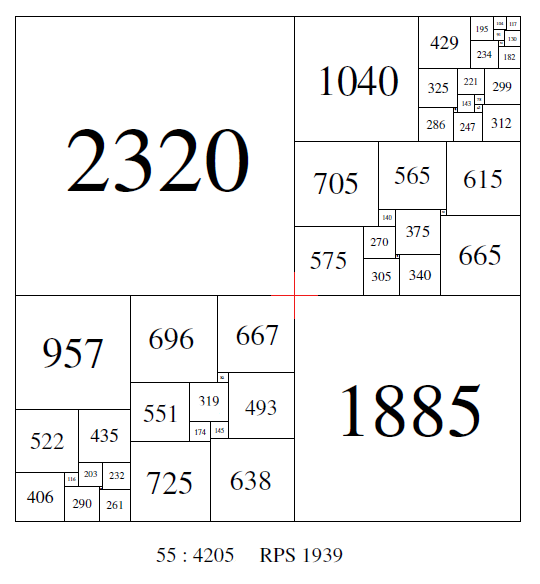
A compound perfect squared square found by Roland Brooks, using the
rotor-stator symmetry method, has 2 crosses;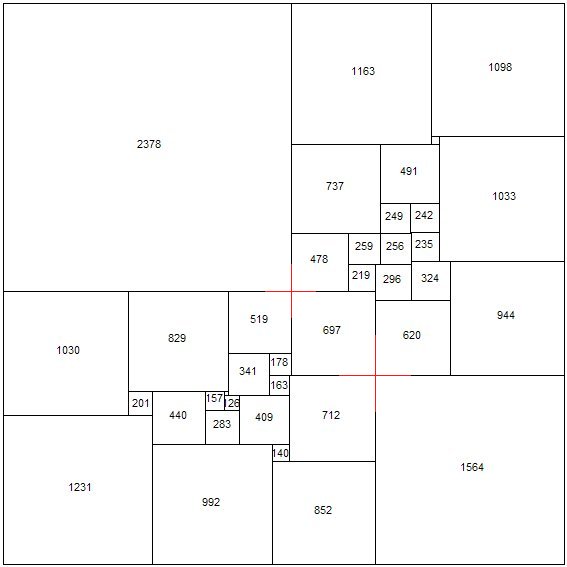
A compound perfect squared square found by Arthur Stone, using 2 order 13 simple perfect squared rectangles,
and 2 additional squares, has a cross. This is the R1, R2 Moron construction and is a crossed construction;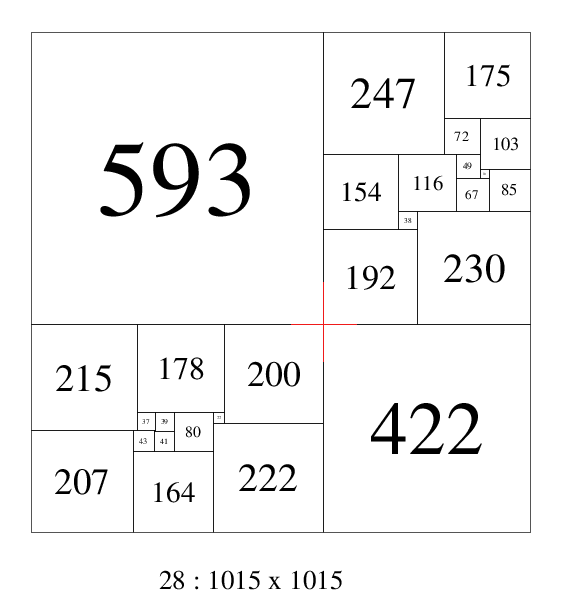
There are versions(isomers) of this CPSS without the cross;
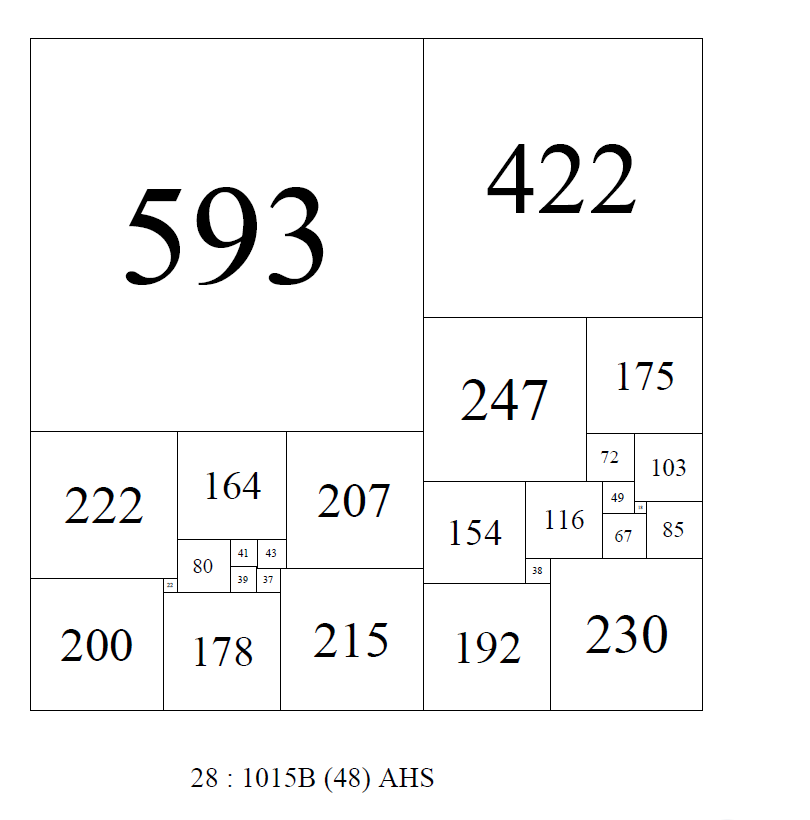
In Brooks, Smith, Stone, Tuttes 1940 paper "The Dissection of Rectangles into Squares" they referred to an order 55 SPSS created using advanced rotor stator techniques. The square had no cross and this was regarded as an achievement. The cross being regarded as a 'blemish', indicative of the construction, which should be eliminated where possible, although it was quickly realised that Perfect Squares with crosses were quite a rare phenomena.
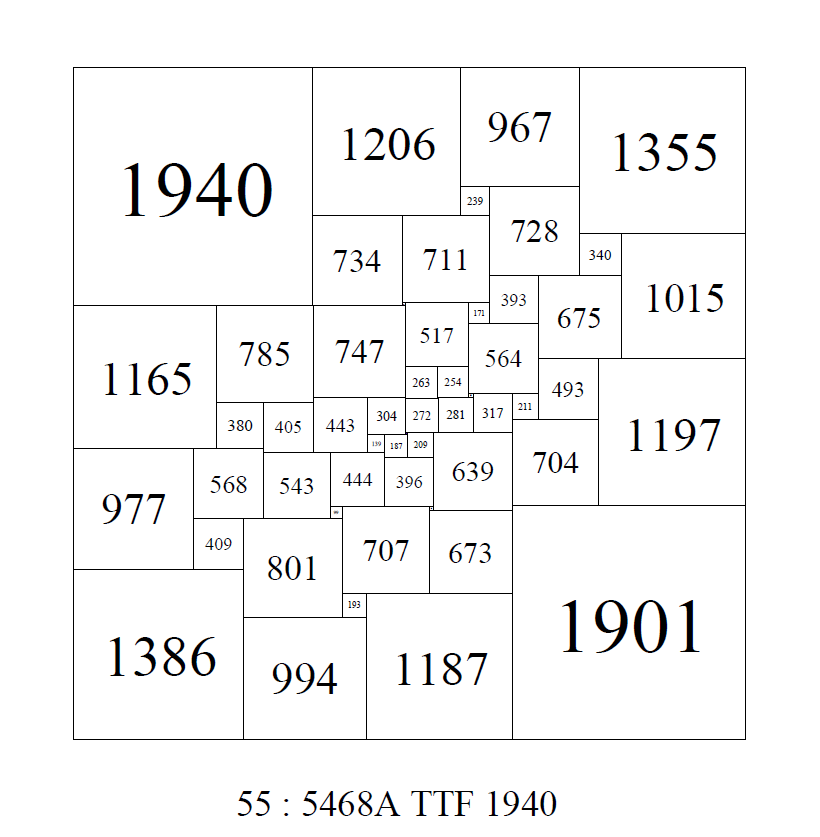
Duijvestijn recorded the bouwkampcode and the orders in which crosses
first appeared. In order 26 he found the first SPSS with a cross of
lowest order[1]. He also found the lowest order CPSS with a cross in
order
26. The lowest
order
SPSR and SISR with a cross are in order 17 and and the lowest order
SISS with a cross is in order 18. I have extended
the counts a little further to order 20 for squared rectangles and order 28 for squared squares.
THE NUMBERS OF CROSSED SQUARED
RECTANGLES AND
SQUARED SQUARES
| Order | SPSR |
SISR |
SPSS |
CPSS |
SISS |
CPSR |
| 9 |
- |
- |
- |
- |
- |
- |
| 10 |
- |
- |
- |
- |
- |
- |
| 11 |
- |
- |
- |
- |
- |
- |
| 12 |
- |
- |
- |
- |
- |
|
| 13 |
- |
- |
- |
- |
- |
|
| 14 |
- |
- |
- |
- |
- |
|
| 15 |
- |
- |
- |
- |
- |
|
| 16 |
- |
- |
- |
- |
- |
|
| 17 |
2 |
5 |
- |
- |
- |
|
| 18 |
2 | 8 |
- |
- |
2 |
|
| 19 |
7 | 36 |
- |
- |
- |
|
| 20 |
29 | 72 |
- |
- |
10 |
|
| 21 |
166 | - |
- |
4 |
||
| 22 |
- |
- |
58 |
|||
| 23 |
- |
- |
57 |
|||
| 24 |
- |
- |
366 |
|||
| 25 |
- |
- |
351 |
|||
| 26 |
1 |
1 |
1858 |
|||
| 27 |
3 |
1998 |
||||
| 28 |
10 |
[1] SIMPLE PERFECT SQUARED SQUARES AND 2 x 1 SQUARED RECTANGLES OF ORDER 26,
A.J.W. DUIJVESTIJN.MATHEMATICS OF COMPUTATION, Volume 65, Number 215 July 1996, Pages 1359-1364